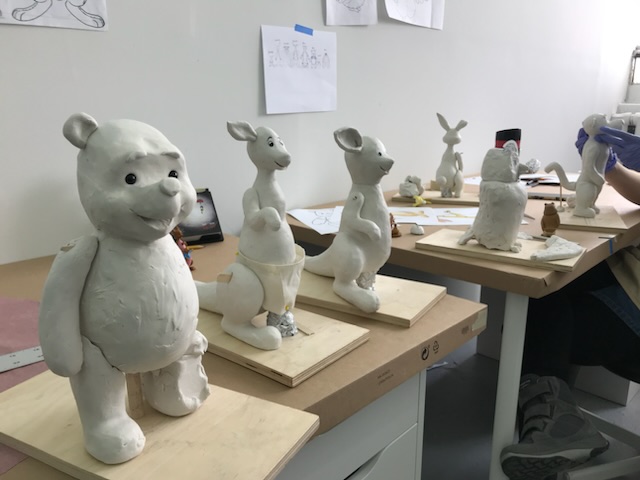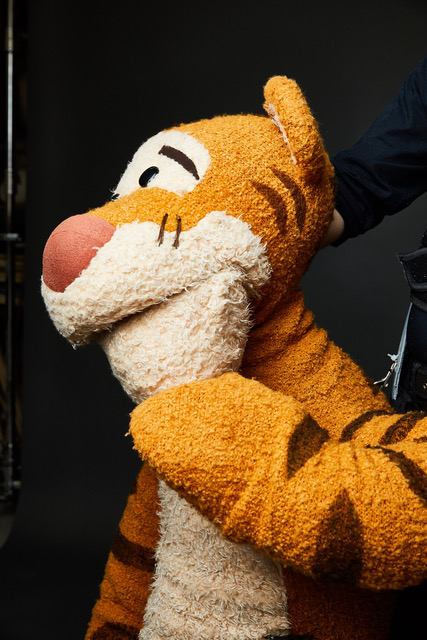Guest Blog: Jonathan Rockefeller, Creator of WINNIE THE POOH, Talks Respecting the Legacy and the Power of Friendship
"Winnie the Pooh belongs to everyone"

Adapting Winnie the Pooh for the stage was always going to be a rewarding but challenging experience. Winnie the Pooh has been part of the English consciousness for over 97 years and has inspired many generations of readers; but he also has a powerful half-century legacy at Disney - being the last featurette on which Walt Disney was personally involved -- the lively Sherman brothers' music, and Pooh's trademark red t-shirt and honeycomb colour.
I suspect that more people have now watched Winnie the Pooh than have read the books, and I remain a happy tourist of both worlds - most deeply appreciative for the clever, elegant humour of A.A. Milne, but also respectful of the hundreds of artists who made lasting contributions to the aura of Winnie the Pooh over the past several decades. Winnie the Pooh belongs to everyone and, in so many ways, we are all 'Christopher Robins' - adding to his many adventures and ensuring a boy and his bear continue to play forever in the enchanted place.

But where does one start? The books? The featurettes? The movies? The TV shows? Should performers have English accents or Transatlantic accents, like Sterling Holloway? Should Kanga and Roo be Australian perhaps? (They are kangaroos, after all).
From the very beginning, the plan was to create four vignettes or 'chapters', which is a very 'Winnie the Pooh' format - both in book and film form. While we wanted the vignettes to feel familiar - Pooh getting stuck in something, Eeyore losing something, Tigger ruining something for Rabbit; we wanted the story itself to be fresh and new, and not a straightforward re-telling. And so, it was decided that the play should take place over the course of a day, but using the emotional device that (to quote the show) - "feels like a whole year goes by for one left behind". So, it become four vignettes or 'mini-adventures' for each of the seasons, with a very simple Pooh-led throughline connecting them.
 We had considered a straightforward play with no music, but were gently reminded by Thomas Schumacher just how entwined the Sherman Brothers are with Winnie the Pooh. In retrospect, the call was spot on - as it's almost impossible to imagine Winnie the Pooh without 'Winnie the Pooh's theme song' or 'The Wonderful Thing About Tiggers'. They are perfect little ditties that echo Pooh's 'hums' (songs he makes up himself).
We had considered a straightforward play with no music, but were gently reminded by Thomas Schumacher just how entwined the Sherman Brothers are with Winnie the Pooh. In retrospect, the call was spot on - as it's almost impossible to imagine Winnie the Pooh without 'Winnie the Pooh's theme song' or 'The Wonderful Thing About Tiggers'. They are perfect little ditties that echo Pooh's 'hums' (songs he makes up himself).
The Sherman Brothers songs are relatively short - each usually less than two minutes - so it was easy for the characters to slip in and out of song without it becoming an out-of-place, big sequined Broadway Musical.
Remember Winnie the Pooh stories are all about 'smallness' and intimacy - there are only seven characters who meander between themes and thoughts, as is their nature. The Sherman Brothers songs are complimented with two of Pooh's hums written by A.A.Milne - "The More It Snows" and "Hey, ho! For the Life of a Bear"; which are exactly the sort of hums Pooh would have dreamt up (because he did!).
 Our talented team at Rockefeller Studios constructed many mockups of the puppets; first in clay, then foam, then fabric, each design more finished than the last. The goal was to allow the puppets to move like each of the characters - Pooh doesn't move too fast, Eeyore is a bit like a sack of potatoes, Tigger... well, he has to be bouncy, bouncy, bouncy!
Our talented team at Rockefeller Studios constructed many mockups of the puppets; first in clay, then foam, then fabric, each design more finished than the last. The goal was to allow the puppets to move like each of the characters - Pooh doesn't move too fast, Eeyore is a bit like a sack of potatoes, Tigger... well, he has to be bouncy, bouncy, bouncy!
We also were mindful to remain true to the aesthetic of, and to pay homage to, E. H. Shephard, who illustrated the original books. Piglet's body and snout shape are more akin to Mr. Shephard's designs, as is Rabbit for those keen-eyed bibliophiles. Incidentally, Rabbit and Owl are actually meant to be 'real' animals, not toys according to the original designs. While our initial mockups were correct in terms of the Disney character lineup - Tigger appeared enormous, as did Piglet, so these were adjusted in size to give Piglet a diminutive, shy quality, and Tigger was redesigned to give a much greater freedom of movement. Now he can move with as much agility as the puppeteer who performs the role.
Thank you to the wonderful, fantastic artists who contributed to this show, to all the great Disney artists over the years, A.A.Milne and E.H.Shephard for giving the world such wonderful characters, and to audiences in London, New York, Chicago, the Netherlands, Belgium, and across the world for continuing to tell their stories and believing in the power of friendship as told through the eyes of a 'silly old bear'.
Winnie The Pooh is at the Riverside Studios until 21 May, then touring
Comments



